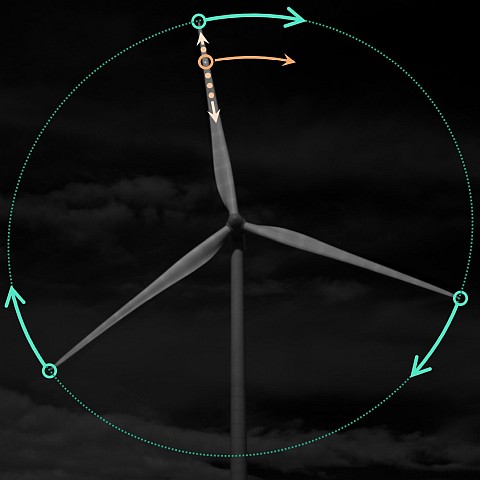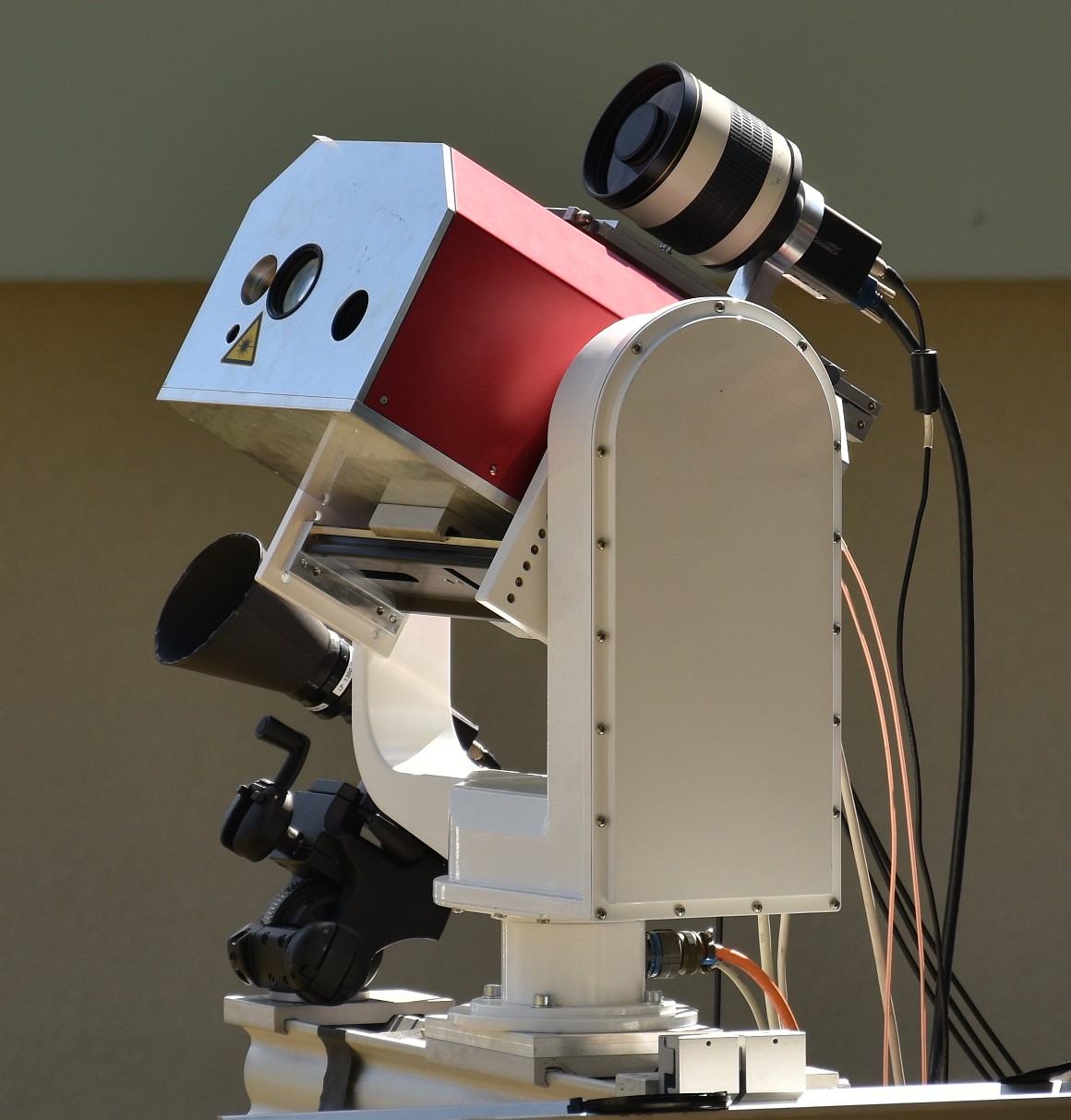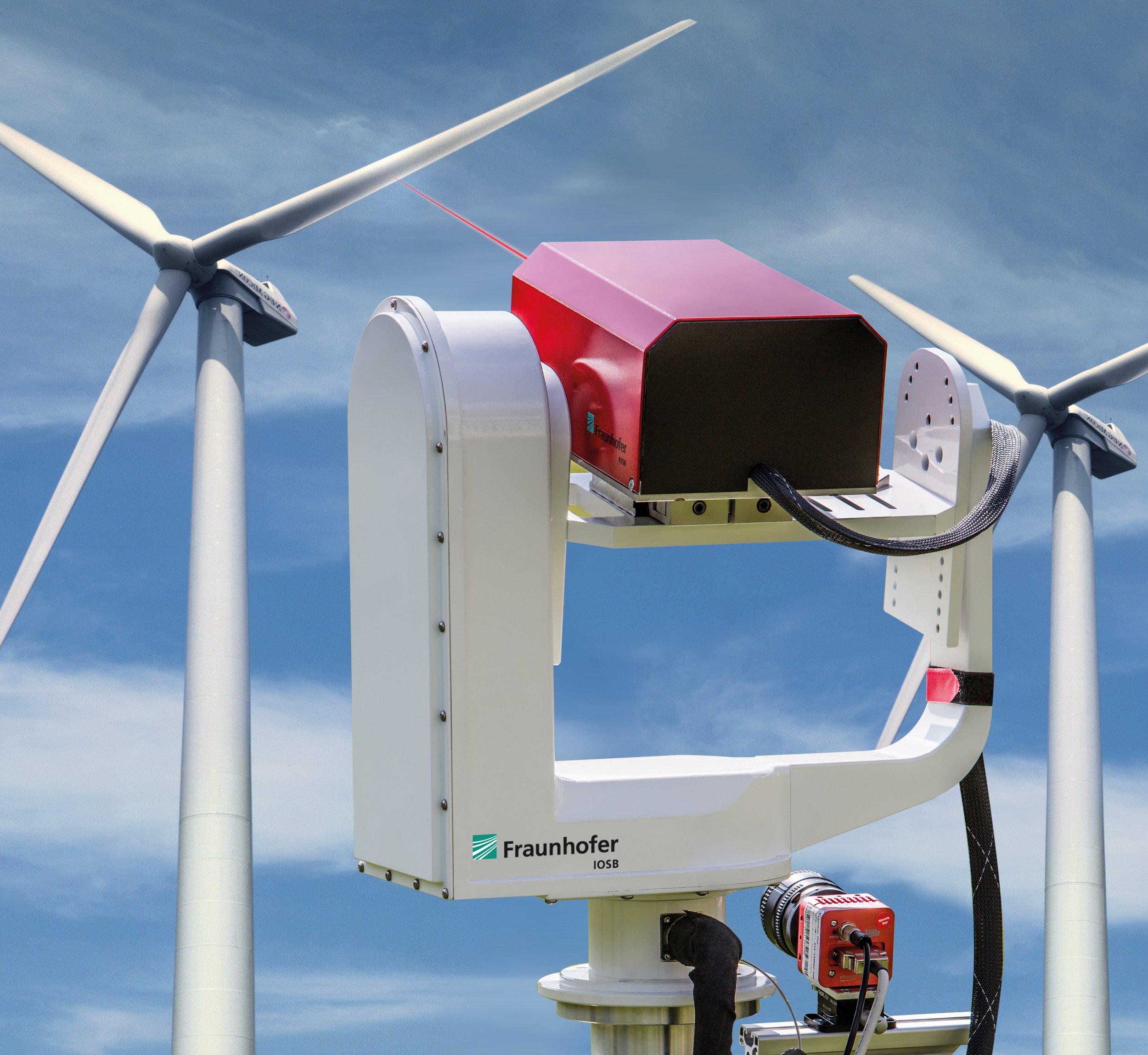
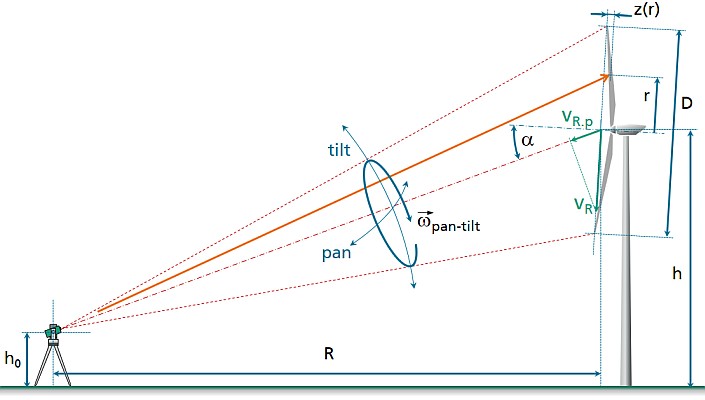
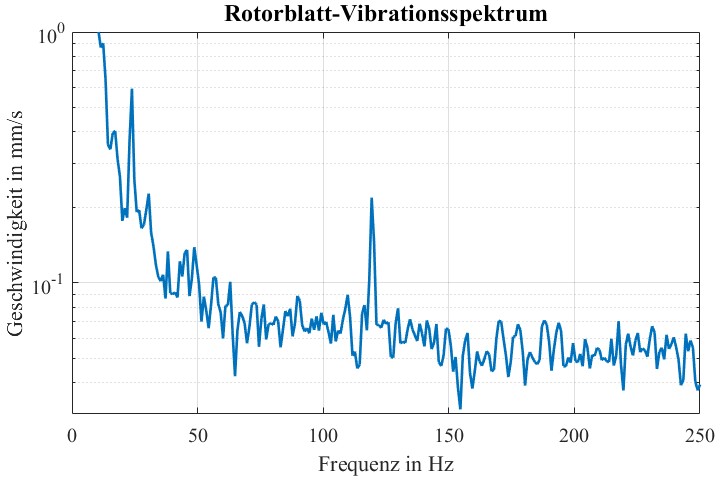
Initial situation
Based on the sounds our car, washing machine or PC fan makes, everyday experience already shows us how much information is contained in the vibration behavior of devices about their functional status. For this reason, condition monitoring systems for monitoring technical equipment often use vibration sensors, whose detection capacity usually covers a much wider frequency range than the human ear. Sensors in modern wind turbines (WTG) also provide valuable data on the condition and characteristics of a turbine based on its vibration behavior. In this way, possible damage can be detected during operation or dangerous resonances or disturbing noise emissions can be eliminated during plant design.
However, effort and costs limit the number of sensors with which a WTG can usefully be equipped. Measurement data is therefore limited to a limited number of selected positions. In addition, for continuous operation, permanently integrated vibration sensors, especially in the rotor blades, often cannot be replaced during later operation in the event of a failure.
Project idea and requirements
The Fraunhofer IOSB is developing a measuring system that can record the vibrations from a distance of 200 m to 500 m completely independently of the WTG. It neither requires contact with the plant nor does it require any modifications for the measurement. Laser Doppler Vibrometry (LDV) forms the basis of the method. With this method, a vibration signal can be picked up at any point on the outer surface of the WTG. If required, LDV can also be used to detect vibrations with very high spatial resolution.
The special focus of the project is the measurement of the vibrations of the rotating rotor blades during operation. For this purpose, the laser spot of the LDV has to follow the rotational movement of the desired measuring position for a few seconds at a time and stabilized there to an accuracy of a few centimeters. For this purpose, the laser Doppler vibrometer is mounted on a pan-tilt head (SNK), a carrier platform that can be rotated around horizontal and vertical axes with high angular precision.
The challenges in the project consist in the development of a vibrometer suitable for measuring a moving object on the one hand and a tracking method for detecting the rotor movement and controlling the SNK on the other hand.
 Fraunhofer Institute of Optronics, System Technologies and Image Exploitation IOSB
Fraunhofer Institute of Optronics, System Technologies and Image Exploitation IOSB 
